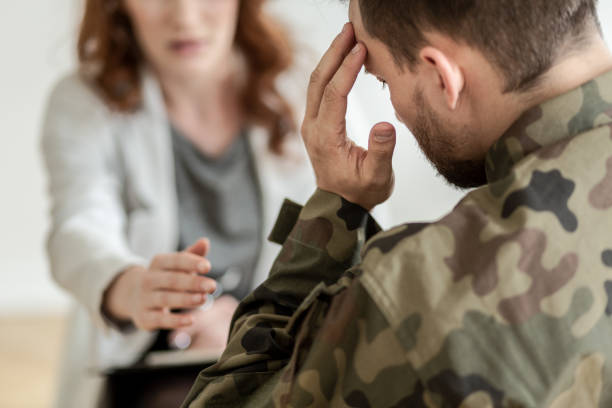Art Therapy & PTSD
As I work through my PTSD, coloring has proved extremely helpful.
When I color in therapy, it offers a secure environment for me to disclose traumatic memories. Coloring stimulates a different region of my brain, allowing me to process my experience in a new way. Even the most traumatic recollections of my sexual assault are no longer a source of fear for me.
Despite what the adult coloring book boom would indicate, there's more to art therapy than just coloring. However, as I've discovered from personal experience, they're onto something. When performed by a qualified practitioner, art therapy, like talk therapy, has tremendous therapeutic potential. Working with an art therapist has proved lifesaving for those suffering from post-traumatic stress disorder (PTSD).
What exactly is Post-Traumatic Stress Disorder?
A stressful incident causes PTSD, which is a psychological disease. War, abuse, and neglect, for example, leave imprints in our memories, emotions, and physiological sensations that might be frightening or threatening. Reliving the event, fear or anxiety, touchiness or sensitivity, memory lapses, and numbness or detachment are some of the symptoms of PTSD when it is activated.
"Traumatic memories generally exist in our brains and bodies in a state-specific form," says Erica Curtis, a certified marriage and family therapist in California. "Basically, they're memories that haven't been processed."
Working with these unprocessed memories until they no longer trigger symptoms is part of the recovery process from PTSD. Talk therapy or cognitive behavioral therapy are two therapies for PTSD that are often used (CBT). By talking and expressing thoughts about the traumatic incident, these treatment methods try to desensitize survivors.
People with PTSD, on the other hand, are affected by their memories, emotions, and bodies. Talk therapy and cognitive behavioral therapy (CBT) may be insufficient to treat all of these issues. It's difficult to relive trauma. Art therapy can help in this situation.
What is art therapy and how does it help people?
Drawing, painting, coloring, and sculpture are all used in art therapy. Art can help people recover from PTSD by allowing them to absorb terrible situations in a different manner. When words fail, art gives a way out. Every phase of the therapeutic process incorporates art with a qualified art therapist.
Curtis also works as an art therapist and is board-certified. Throughout her recuperation from PTSD, she creates art. They could make collages of pictures symbolizing internal strengths, for example, to "help clients uncover coping methods and internal strengths to begin the process of healing," she says.
By creating a mask or painting a sensation and discussing it, clients explore their feelings and views regarding trauma. By shooting nice items, art develops a sense of foundation and coping. By generating a visual chronology, it can assist explain the tale of trauma.
Integrating art into therapy may address a person's entire experience by using techniques like these. With PTSD, this is crucial. Trauma isn't something that can be explained with words alone.
What is the role of art therapy in the treatment of post-traumatic stress disorder (PTSD)?
Although conversation therapy has long been used to treat PTSD, words can often fall short. Experts claim that art therapy works because it offers a different, equally effective channel for expression.
Board-certified art therapist Gretchen Miller says for the National Institute for Trauma and Loss in Children, "Art expression is a wonderful approach to securely confine and establish separation from the frightening experience of trauma." "When words are insufficient, art gives voice to and makes visible a survivor's experience of feelings, ideas, and memories."
"When you bring art or creativity into a session, it taps into other elements of a person's experience, on a very, very fundamental level," Curtis adds. It gives you access to facts... or feelings that you wouldn't get otherwise."
The body, PTSD, and art therapy
Reclaiming your body's safety is a crucial part of PTSD rehabilitation. Many people suffering from PTSD feel cut off from their bodies or alienated from them. This is frequently the outcome of feeling frightened and in danger after stressful experiences. However, learning to have a healthy relationship with one's body is essential for PTSD recovery.
In "The Body Keeps the Score," Bessel van der Kolk, MD, states, "Traumatized people persistently feel unsafe within their bodies." "People must become aware of their senses and how their bodies interact with the environment around them in order to change." The first step in breaking free from the slavery of the past is physical self-awareness."
Because clients influence art outside of themselves, art therapy is ideal for body work. Clients learn to access their bodily experiences safely and rediscover that their bodies are a safe place by externalizing painful parts of their trauma tales.
"Art therapists, in particular, are taught to use media in a variety of ways," Curtis explains. "Art may be a bridge back into feeling grounded and comfortable in one's body, just as it can be a bridge between feelings and words."
Where can I discover an art therapist who is perfect for me?
Look for a trauma-informed therapist if you need an art therapist who can help with PTSD. This indicates that the therapist is a professional in the field of art, but also has other skills to assist survivors in their rehabilitation, such as talk therapy and cognitive behavioral therapy (CBT). The focus of treatment will always be on the arts.
"When pursuing trauma art therapy, look for a therapist who specializes in the integration of trauma-based treatments and ideas," Curtis says. "It's vital to keep in mind that any intervention using visual or sensory elements might be triggering for the client, therefore only a skilled art therapist should utilize them."
A trained art therapist will have a master's degree in psychotherapy and a certificate in art therapy. Many therapists may claim to provide art therapy in their advertisements. Only individuals with accredited credentials (ATR or ATR-BC) have completed the extensive training required to treat PTSD. If you or someone you know are in need of art therapy to help with PTSD, feel free to contact:
Creative Sanctuary Psychotherapy & Art Therapy
37 Willoughby Path
East Northport, NY 11731
(631) 493-0933
https://creativesanctuary.com/


